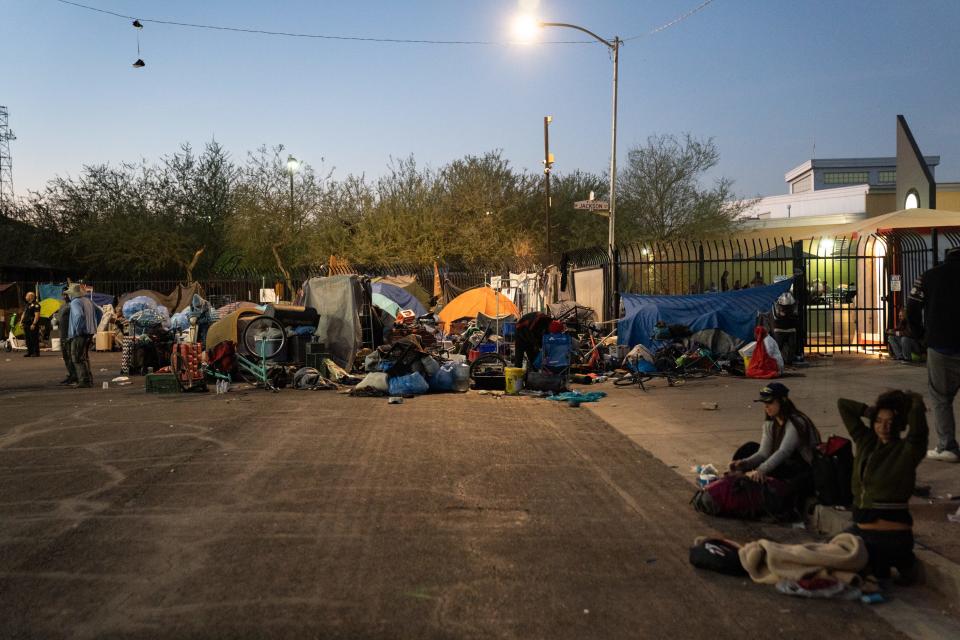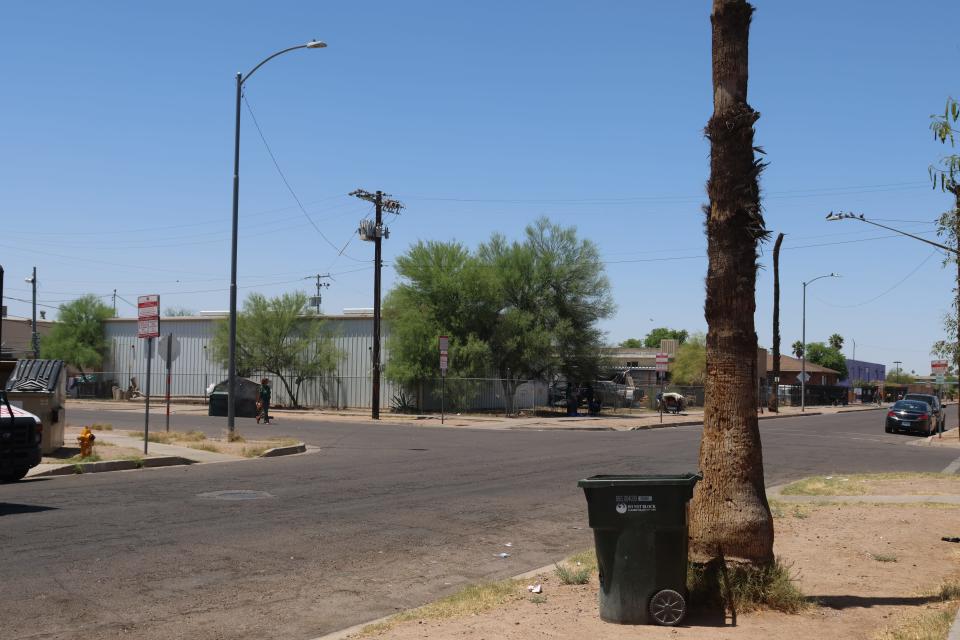Annual homeless count shows slight dip in county's unsheltered population
Maricopa County’s homeless population edged slightly down from last year.
Volunteers participating in the annual point-in-time count on Jan. 23 recorded 9,435 unhoused people on the street or in a shelter.
That marked a roughly 2% reduction from 2023, when 9,642 people were tallied, according to the official results of this year’s count released Wednesday afternoon.
For the first time since the 2020 count, more of the homeless individuals recorded, about 57%, were found in shelters as opposed to on the street.
The number of those counted in shelters, 5,359, was a 13% increase from the 4,734 counted the prior year. The number of those counted on the street, 4,076, was down 17% from the 4,908 recorded in 2023, the Maricopa Association of Governments’ report highlighted.
“This year's Point-in-Time Homelessness Count shows a significant decrease in the number of individuals who are unsheltered in Phoenix,” Phoenix Mayor Kate Gallego boasted on X.

“While this drop demonstrates the work we’ve done,” she continued, “there’s still more we need to do to end homelessness.”
The Maricopa Association of Governments coordinates the annual survey, a single-day snapshot to quantify the region’s homeless population. The annual tally is reported to the U.S. Department of Housing and Urban Development.
Brian Gruters, the regional homelessness program manager for the regional association stressed that the point-in-time numbers are always taken with a grain of salt as there are a handful of factors that could affect it.
“The number of people who show up to count varies, there’s always weather (conditions), and technical difficulties could happen in the middle of the count,” he noted.
This year’s numbers though, he said, still represent a shift in people staying in shelters.
“The most important thing is it shows that we’ve done a good job as a community of (providing) shelter resources,” he said. “That’s been a lot of work in the making, so seeing those numbers is encouraging.”
He also attributed the decline in unsheltered people to 820 new or temporary shelter beds added across the Valley. Part of the push to increase bed capacity, he noted, stems from rush to close The Zone last fall.
The Zone was the makeshift sidewalk home for as many as 1,000 people, who camped along Madison Street, between Eighth and 13th avenues in downtown Phoenix. Business owners and residents sued the city in August 2022 over claims that it was a "humanitarian crisis.”
Maricopa County Superior Court Judge Scott Blaney gave Phoenix until November 2023 to clear out The Zone.

While the association was encouraged by the sheltered numbers, Gruters acknowledged that a homeless person’s struggles don’t end there.
“They’re still experiencing homelessness, but in a shelter,” he said, adding, “It shows that we’ve done a good job, but that we have more work to do to get people in homes, permanent homes.”
Factoring for weather, the report acknowledged that the Valley was hit with a winter storm the day of the count in January. It likely impacted the survey as many of the region’s homeless who typically sleep outdoors sought cover from the heavy rain.
“What I will say is, if you don’t have shelter beds to go into, they won’t go into them,” Gruters said, emphasizing the association’s positive outlook on the situation. “It’s good to see that if there’s an event like that, there are shelter beds they could use.”
Much of the Valley’s unsheltered population was concentrated in Phoenix, which recorded 2,701 people — a 19% drop from the 3,333 people reported in 2023.
Nearly 880 unsheltered people were counted in the East Valley, while the West Valley had 483. Aside from Phoenix, the cities with 100 or more unsheltered people were:
Glendale with 211
Chandler with 115
Mesa with 309
Tempe with 266
Nearly 6,000 of the overall homeless population were men or boys. Women and girls accounted for 3,413, and those who identified as either non-binary, transgender or something else made up 68.
Broken down by ethnicity, nearly half of the homeless tallied were white.
Another 29% were Black and African American, 12% were Hispanic or Latinx and 6% were American Indian, Alaska Native or indigenous.
For MAG, the numbers of Black and indigenous people who were reported homeless are concerning, Gruters said.
According to the U.S. Census Bureau, Maricopa County’s Black and African American residents comprised only 6.8% of the population.
American Indians and Alaska Natives represented 2.9%.
The disproportionate numbers of Black and indigenous people who were reported homeless is a concern for MAG and the Continuum of Care, the federal housing department’s arm in addressing homelessness.
“It’s top of mind,” Gruters said, noting that it’s a trend in many large communities nationwide. He added that “it’s a challenge nonetheless and it’s something we want to keep an eye on.”
One way the association is working to address the issue, he said, is making sure there’s proportionality among the homeless who are receiving assistance.
“That’s something we definitely keep an eye on,” he said. “If you’re in one of those overrepresented groups, we want to make sure you’re getting assistance.”
Shawn Raymundo covers the West Valley cities of Glendale, Peoria and Surprise. Reach him at sraymundo@gannett.com or follow him on X @ShawnzyTsunami.
This article originally appeared on Arizona Republic: Annual snapshot count shows slight dip in county's homeless population

